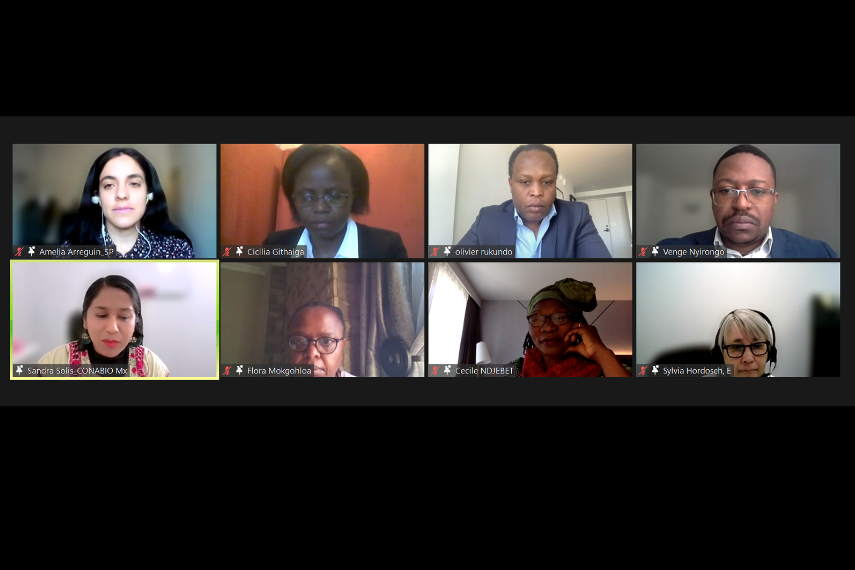The recent adoption of the Post-2020 Gender Plan of Action (GPA) at the 15th Meeting of the Conference of the Parties has marked an important milestone in pursuing gender equality in biodiversity conservation. Recognizing the vital role of women’s participation and leadership in achieving long-term biodiversity goals, the GPA provides a roadmap for implementing gender mainstreaming and gender-responsive approaches within the Kunming-Montreal Global Biodiversity Framework. To explore the practical implementation of the GPA, the UNCBD Women’s Caucus and the Secretariat of the Convention on Biological Diversity hosted a virtual roundtable on gender justice and biodiversity “How to implement the CBD Gender Plan of Action on the ground?” on 26 May. In this blog post, we will delve into the key insights and discussions from this significant event.
The event aimed to raise awareness about the importance of the post-2020 Gender Plan of Action and its content, and to encourage national and subnational governments, cities, and other local authorities, alongside relevant organizations, to embrace this comprehensive plan to advance gender equality within biodiversity conservation efforts. By integrating the GPA into policy and action at national and local levels, we can work towards achieving the 2050 vision of living in harmony with nature.
The virtual roundtable served as a platform for disseminating best practices and exploring opportunities for governments, local authorities, and diverse organizations to lead the effective implementation of the GPA. The session began with opening remarks from UNCBD Women’s Caucus Advisor Cicilia Githaiga and UN Women Policy Advisor Sylvia Hordosch. UNCBD Women’s Caucus coordinator Amelia Arreguin moderated the discussion.
Overview of the GPA structure and expected results
Senior Programme Management Officer and Head of Unit at the CBD Secretariat Olivier Rukundo guided the audience through the structure of the GPA, emphasizing its expected results and suggested activities. His comprehensive overview provided a deeper understanding of how the GPA can drive positive change and gender-responsive approaches in biodiversity conservation.
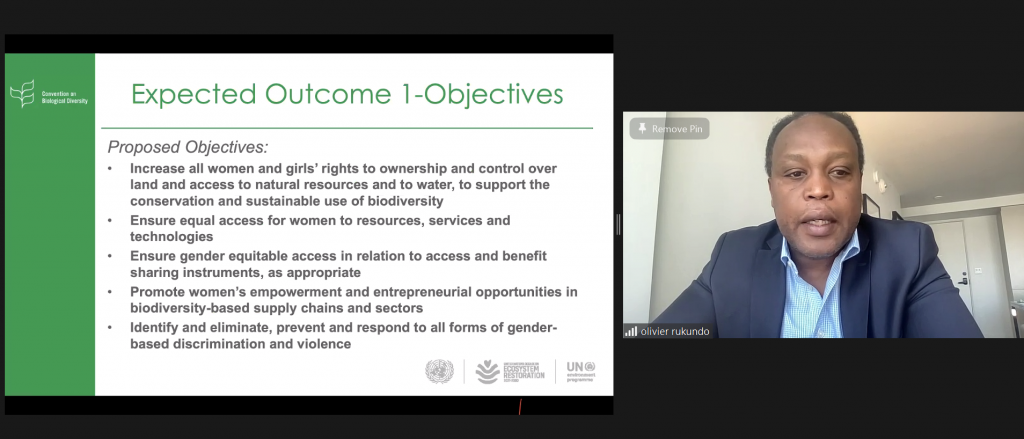
Read Olivier’s presentation here.
Opportunities for national and local implementation
UN Women’s Focal Point for the Rio Conventions Venge Nyirongo shared his analysis of the GPA and highlighted opportunities for their implementation at the national and local levels. His insights shed light on the potential for collaboration and the transformative impact that can be achieved through gender-responsive approaches.
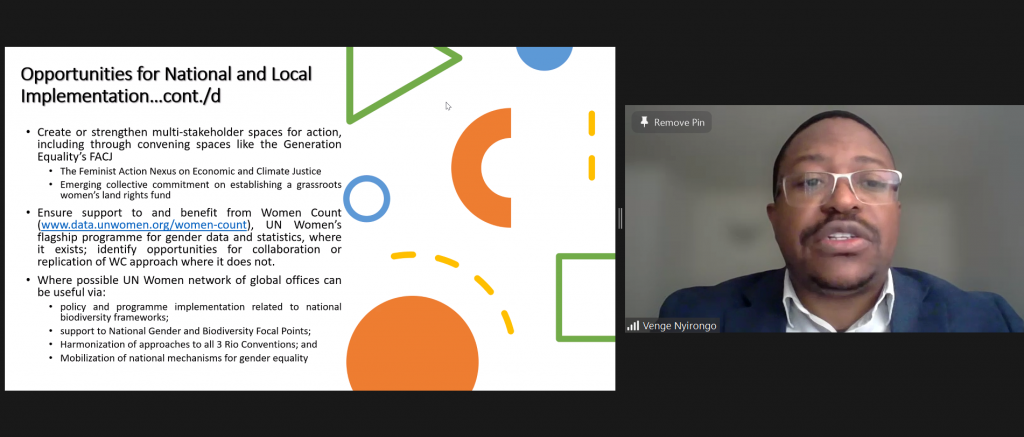
Read Venge’s presentation here.
Country perspectives and implementation plans
Sandra Solis Jerónimo, a specialist in biodiversity strategies from the Mexico National Government, and Flora Mokgohloa, the Deputy Director-General for Biodiversity and Conservation in the Department of Forestry, Fisheries, and the Environment from the South African National Government, shared their countries’ perspectives on the GPA and respective implementation plans. Their experiences served as inspiring examples of concrete steps being taken to promote gender equality in biodiversity conservation within their respective nations.

Read Sandra’s presentation here.
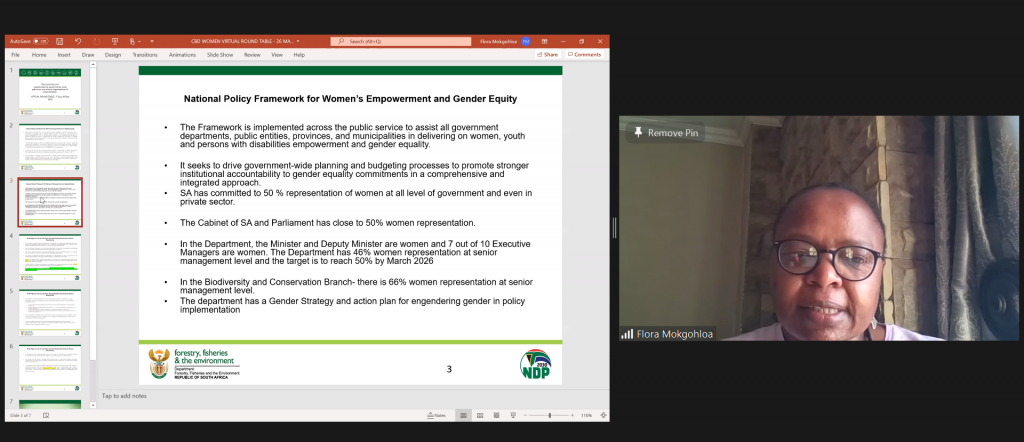
Read Flora’s presentation here.
Strengthening partnerships for better outcomes
The event concluded with Cecile Ndjebet, president of the African Women’s Network for Community Management of Forests (REFACOF). She underscored the importance of horizontal partnerships with women’s organizations in different territories. She highlighted how these partnerships can lead to better outcomes for both people and biodiversity, creating a synergy between gender equality and biodiversity conservation efforts.
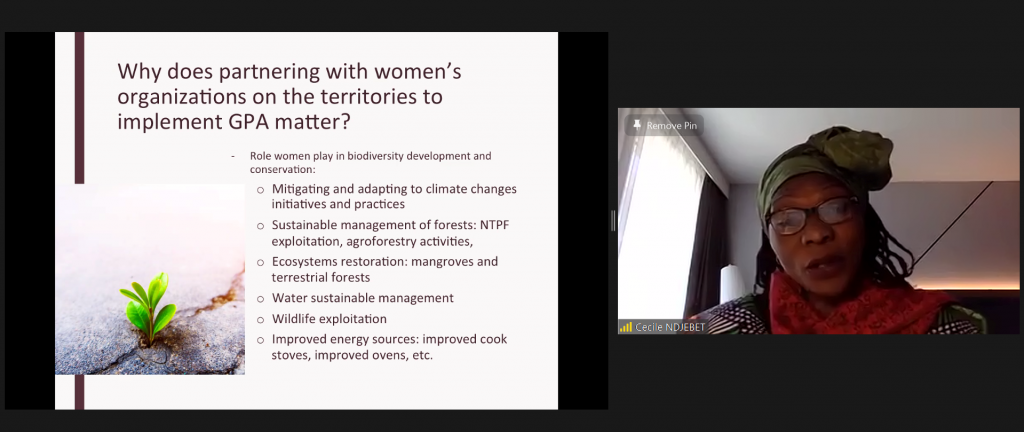
Read Cecile’s presentation here.
In conclusion, the virtual roundtable on implementing the CBD Gender Plan of Action provided a crucial platform for stakeholders to come together and discuss the practical steps needed to translate the GPA from agreement to action. By raising awareness, sharing best practices, and fostering collaboration, the event laid the foundation for transformative change in achieving gender equality in biodiversity conservation. As we move forward, it is essential for governments, organizations, and individuals to seize the opportunities presented by the GPA and work collectively towards a future where gender equality and thriving biodiversity go hand in hand.
